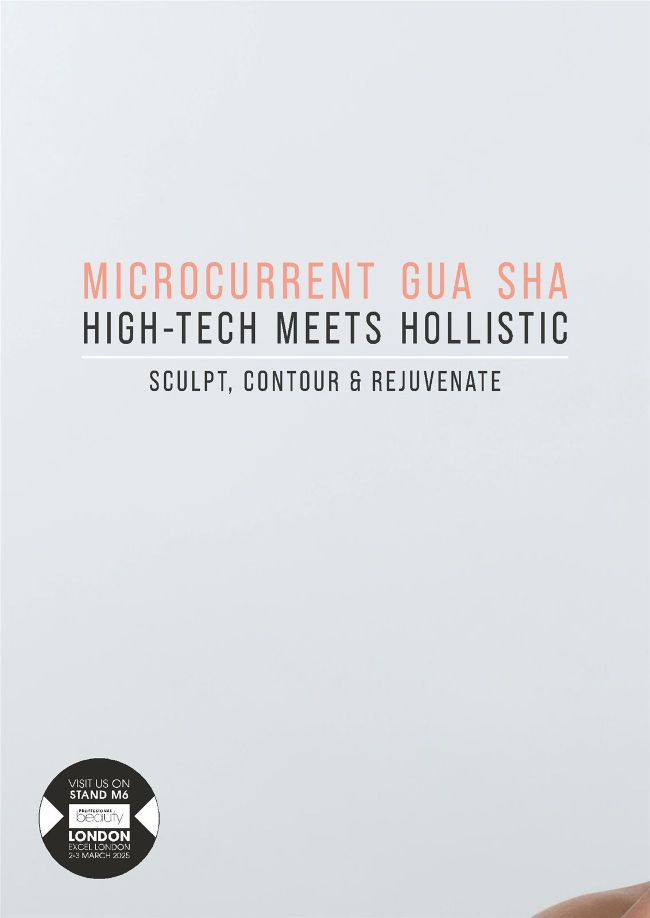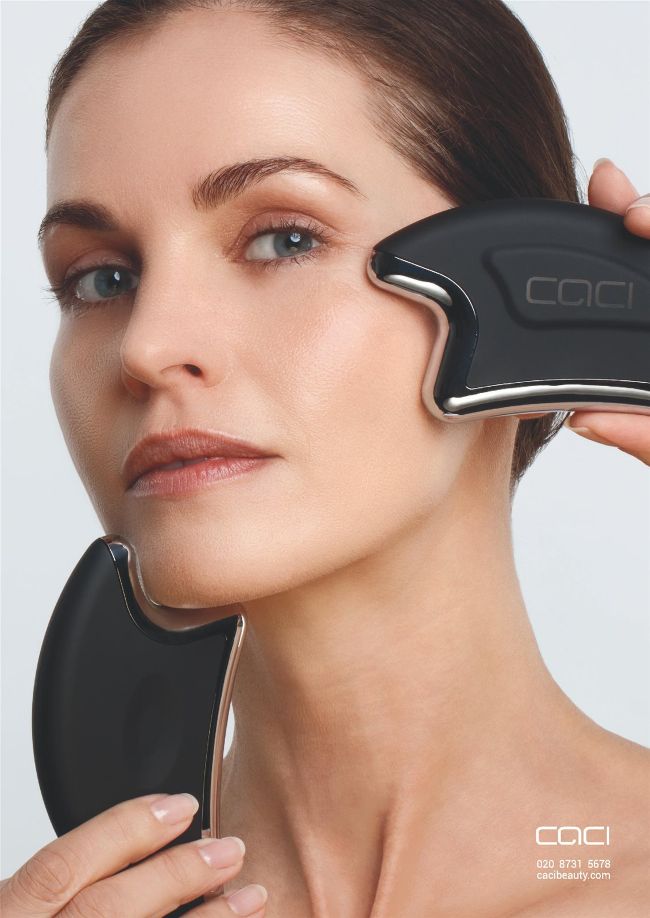BUSINESS TIPS
ASK THE Experts
Our beauty experts answer your questions about every aspect of running a salon or spa business
How do I handle clients who are unhappy with their previous SPMU artist’s work?
When someone is unhappy with another brow artist’s work, I find that it’s usually due to pigment discolouration or bad shape. If it’s not either of those, then I would have a consultation with the client to find out what worries them most and what results they are looking for.
It’s always best to reduce the pigment before going over it, so I recommend starting with at least three sessions of my pigment wiper treatment (if the pigment looks light pink, then pigment wiper red line). This way, I don’t have to go bigger to try and go over the old tattoo and my work won’t be hindered by what’s underneath.
Start with a few sessions of pigment wiper and then see how you go. If the client wants to remove more or if they feel the area is not light enough, then you can continue with more sessions.
Once you are happy with the results, you can go over the brows. If you’re happy with the colour of the pigment then usually you just need microblading, but if you want to cover the colour of the previous pigment then you would need microshading.
In some cases, if the pigment is too deep and too dark, it does make it harder to remove. I try to help the client understand that removing pigment can be a long process, but it is necessary. Some clients would prefer to not go through the removal process but if the previous work is too dark, discoloured or badly shaped, then I cannot tattoo over this – it will be too difficult to cover the old tattoo. It’s also because, over time, pigment blends, especially if there’s already pigment underneath. I don’t recommend it to anyone because it can taint your name as an artist.


If clients are anxious about getting SPMU again after a previous bad experience, I think it’s important to show them other SPMU work of brows that have healed. Usually with anxious clients, I go lighter on the first session so that on the initial top-up session we can see what has remained and what I need to go over. I also tell them that it is important to do your research before choosing an artist; you must see what their healed brows look like.
High-quality pigments, tools and clean spaces are very important when carrying out this work. As an artist, you should want to learn more and better yourself constantly, listen to what your clients are asking for but also understand that they are not always right.
Don’t miss Nez Hasan discussing “Safe and effective techniques for SPMU removal” on the Trends and Techniques Stage at Professional Beauty London on Sunday, March 2 at 2pm.
Nez Hasan is an SPMU artist who offers a range of treatments including brows, lips, lashes and areola tattoos. Hasan is based in Kensington but frequently travels abroad to perform her specialist treatments.
What techniques should nail techs master for flawless gel manicures?
Proper preparation of the natural nail is fundamental to achieve a successful gel application. This step ensures optimal adhesion between the product and the nail plate. If preparation is inadequate, it may lead to lifting, compromising the longevity and appearance of the manicure.
It’s important to begin with careful cuticle preparation, as improper technique can lead to infections or dermatological issues. Once the cuticle area is addressed, the natural shine of the nail should be gently removed using a 180/180 file – this is the most suitable file for natural nails because it avoids excessive abrasion. Primers are vital in creating a strong bond between the natural nail and the gel. For most clients, an acid-free primer works well.
Common preparation mistakes to avoid
• Leaving any natural shine on the nail plate.
• Failing to fully remove cuticle residue adhered to the nail.
• Touching the nail plate after it has been prepped, which reintroduces oils and compromises adhesion.
• Over-filing the natural nail, leaving it weak and damaged.
• Leaving dust on the nail plate, which hinders product bonding.
Applying the base coat
Applying a base coat is an essential step in gel manicures, as it creates the foundation for adhesion and longevity. The choice of base coat should be tailored to the client’s nail type and needs.
Regardless of the base chosen, the application technique is crucial:
• Always apply a thin, even layer, ensuring the entire nail surface is covered without touching the skin.
• Cap the free edge to seal the product and prevent lifting.
• Use smooth, controlled strokes for precision and avoid pooling.
Perfecting gel colour application To achieve an even and polished finish, apply two thin layers of colour rather than one thick layer. Cure each nail for a few seconds individually before proceeding to the next to help maintain control and prevent the product from pooling near the cuticles or sidewalls.
Thicker layers not only create an uneven, rippled surface but also risk improper curing, especially with highly pigmented shades. By working with thin, consistent layers, nail techs can ensure a smooth and professional finish.
Each layer must be cured for the recommended time – typically one minute in LED light or two minutes in UV light. Thorough curing ensures durability, prevents peeling and avoids uneven pigmentation.
Applying the top coat
The top coat is the final protective layer that secures the gel manicure, enhances durability and provides the desired finish. Whether it’s a high-shine gloss, a matte effect or a holographic touch, the top coat protects the colour beneath and ensures long-lasting results.
To avoid air bubbles and achieve a smooth finish:
• Apply the top coat in a thin, even layer, ensuring there is no contact with the skin.
• Always seal the free edge to prevent chipping.
• Work slowly and steadily to avoid the formation of bubbles during application.
Sara Pinto is the academy manager and product manager at nail, makeup and hair brand Andreia Professional, which is available through Salon Services in the UK.
What steps can I take to ensure my beauty business is fully representative?
I have been in the beauty business for 41 years and have witnessed immense change, especially in diversity and inclusion. From a time when foundation shades for dark skin were non-existent to today, where brands are starting to embrace different groups of people, significant progress has been made. However, there is still much work to do in evolving the beauty industry.
Representation beyond products
Expanding foundation shades was a great leap forward, but real representation goes beyond products – it extends to boardrooms, creative teams and leadership positions. Multicultural leadership brings ideas and insights that reflect the everyday experiences of global audiences.
This is not about political correctness; it’s about creativity, fairness and ensuring everyone feels seen and valued. The beauty industry must lead by example in hiring and promoting individuals who mirror its diverse customer base.
Cultural sensitivity in marketing
Social media has made beauty marketing more accessible but also more scrutinised. Missteps such as cultural appropriation or poor campaign choices can harm a brand’s reputation and alienate customers.
To avoid these pitfalls, brands must work with individuals who understand culture and ensure their teams are inclusive and respectful. Genuine cultural awareness builds trustworthy relationships and fosters authentic connections with diverse audiences.
Accessibility for all
True diversity isn’t limited to skin colour or hair texture – it also includes age, gender, disability and socioeconomic status. The industry must address these gaps in a meaningful and practical way, from inclusive advertising to accessible treatments, packaging and product design.
Education and mentorship
Education is vital for fostering a deeper understanding of diversity and inclusion within the beauty industry. Issues related to skin tone, hair texture and accessibility affect beauty professionals, clients and consumers alike.
Mentorship is equally important. It ensures that the next generation of beauty professionals, particularly those from underrepresented communities, have access to the resources and guidance needed to succeed.
Collaboration and collective action
No single company or individual can tackle these issues alone. The industry must come together to establish standards, certifications and coalitions that promote diversity and inclusion. Collective effort is necessary to bring about lasting change and to ensure the beauty industry reflects the world it serves.
Why reputation matters
Today’s consumers are value-driven, choosing brands and professionals that align with their beliefs. Diversity and inclusion should not be performative but embraced authentically. Representation in campaigns, products and leadership fosters customer loyalty, trust and sends a powerful message of acceptance and respect.
There is still much work to be done. Every part of the beauty value chain must commit to meaningful change. It’s time to move beyond performative gestures and embrace inclusion with integrity and sensitivity.
The beauty industry has the potential to be a force for positive societal change, building a reputation that will endure. The future of beauty depends on teamwork, continuous education and a shared responsibility to improve.
Eryca Freemantle is a global business strategist and the head coach at EATOW Global.
DO YOU HAVE ANY QUESTIONS TO PUT TO OUR EXPERTS?
Send your question about absolutely anything to do with running a beauty business to pb.editorial@thepbgroup.com